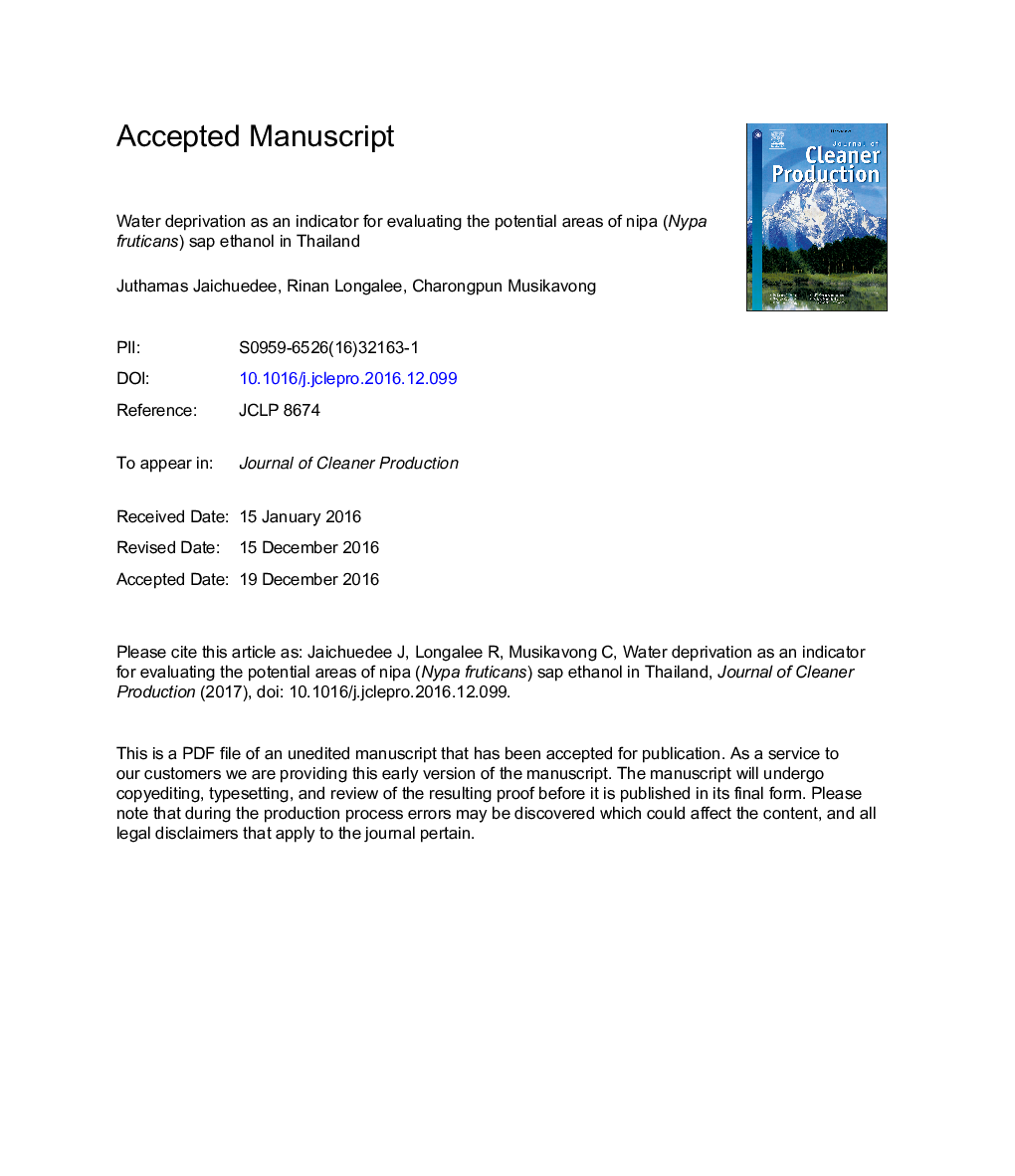| Article ID | Journal | Published Year | Pages | File Type |
|---|---|---|---|---|
| 5479508 | Journal of Cleaner Production | 2017 | 36 Pages |
Abstract
Ethanol has been promoted as alternative fuel for vehicles in Thailand. The impact of water use on producing the feedstock for ethanol is important. Nipa palm (Nypa fruticans) is a potential alternative feedstock to bioethanol production. This work aimed at determining the consumptive water use and water deprivation caused by nipa sap based ethanol production in the potential growing areas of southern Thailand. These potential nipa growing areas could produce nipa sap ethanol at the rate 2.64Â ÃÂ 106Â L/day (L/d). The consumptive water use by nipa sap ethanol was determined as from 893 to 1573Â L water/L ethanol, and over 90% of it originated at the nipa plantations. The yield of nipa sap significantly affects the consumptive water use. The water deprivation, an indicator of the water scarcity footprint of nipa sap ethanol, was found to be between 10.7 and 184Â L H2Oeq/L ethanol. The large range of water deprivation values was mainly due to differences in the water stress index between watersheds. Peninsula-West coast and Thale sap Songkhla watersheds were considered, based on the water deprivation values, as areas with high potential to produce nipa sap ethanol, while Pattani, Tapi, and Peninsula-East coast watersheds have moderate potential. To support the targets in the alternative energy development plan of Thailand (2015-2036), the expansion of nipa plantations should focus on areas with high or moderate potential. To establish the nipa sap ethanol on a commercial scale, further studies are necessary. The yield and chemical composition of nipa sap may depend on plant variety, maturity, and type of plantation. Good management practices need to be established for nipa plantations, and pilot scale ethanol conversion needs to be demonstrated and assessed.
Related Topics
Physical Sciences and Engineering
Energy
Renewable Energy, Sustainability and the Environment
Authors
Juthamas Jaichuedee, Rinan Longalee, Charongpun Musikavong,
